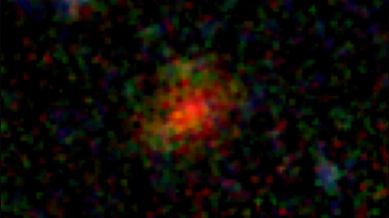An elusive ghost of a galaxy has been spotted using the James Webb Space Telescope.

Scientists first saw it as a glowing blob and then in images from the Hubble Space Telescope before it vanished completely from the telescope’s eye. Now, it has reappeared as a faint galaxy in an image taken by the James Webb Space Telescope.
The object, dubbed AzTECC71, has been identified as a dusty star-forming galaxy by astronomers. It is shrouded in so much dust that it is difficult to see through, but it is forming many new stars. The dust dates back to nearly one billion years after the Big Bang. Scientists used to believe earlier that such galaxies were quite rare in that era of the universe. But this discovery, plus some others that are yet to be announced, suggests that they might be up to 10 times more common than expected.
You have exhausted your
monthly limit of free stories.
Read more stories for free
with an Express account.
Continue reading this and other premium stories with an Express subscription. Use promo code EXPRESS to get 15% off.
This premium article is free for now.
Register to read more free stories and access offers from partners.
Continue reading this and other premium stories with an Express subscription. Use promo code EXPRESS to get 15% off.
This content is exclusive for our subscribers.
Subscribe now to get unlimited access to The Indian Express exclusive and premium stories.
Star-forming galaxies that are dusty are usually quite difficult to spot. This is because the dust typically absorbs most of the light emitted by stars to later to then radiate that out in infrared wavelengths of light. This meant that they were “1-dark,” meaning that the Hubble telescope could not observe them.
The galaxy was first detected as what seemed to be a blob of dust emission by a camera on the James Clerk Maxwell Telescope in Hawaiii. Researchers next spotted it in data collected by another team using the ALMA telescope in Chile. This information allowed them to narrow the location of the source.
After that, they looked at Webb telescope data in the infrared wavelength of around 4.44 microns, they found a galaxy at that exact same place. They then looked at data in shorter wavelengths of light and found that the galaxy was much more visible. A paper on the galaxy has been published in The Astrophysical Journal.
© IE Online Media Services Pvt Ltd
First published on: 06-12-2023 at 17:26 IST






